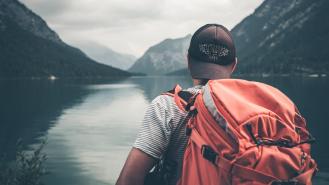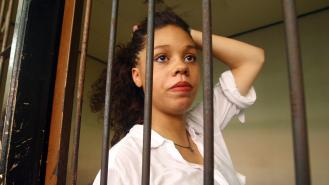
Dying to travel
Crocodile Dundee-appropriators lurking in the outback; torture porn in YMCAs; ‘that’s not a knife’… etc. These are the horrors we have come to associate with backpacking, that you can’t help but think of when someone tells you about their gap year plans. Wolf Creek and Hostel have a lot to answer for. But as the news comes that Grace Millane—the 22-year-old who went missing in Auckland on the 1st December—has been found dead, we get a reminder that it’s not just Hollywood. There are real dangers to be faced by the backpackers travelling around foreign countries and Grace Millane’s story is sadly, not that unique. So, is backpacking as dangerous as the horror stories suggest.
The murder of Peter Falconio is one of those horror stories—a case that served as inspiration, in part, for Wolf Creek, along with the crimes of Ivan Milat. In 2001, Falconio was travelling in Australia with his girlfriend, Joanne Lees. The couple were travelling through the outback in a van, when they noticed a car following them. The driver gestured to them to pull over and said he had noticed a problem with the van’s exhaust. When Falconio got out to investigate, the man pulled out a gun and shot him. Then the killer came for Lees, tying her hands and dragging her from the van. Luckily, when he went back to get Falconio’s body, Lees managed to escape and hide. Eventually, the killer left and she was able to flag down help. Little evidence at the crime scene beyond Lees’ own footprints meant that she originally came under suspicion, but in 2003, Bradley Murdoch was arrested for the murder and in 2005, he was convicted. Falconio’s body has never been found.
Only a year later, Caroline Stuttle was also murdered in Australia while backpacking through the country. Stuttle had left her the caravan park in which she was staying to phone her boyfriend in England when she was attacked on a bridge. Ian Previte had tried to grab her bag but she struggled to hold on and so he threw her over the side to a 30 feet fall. She died on impact. Her family later set up the charity Caroline’s Rainbow Foundation, to raise awareness of the importance of travelling safely to young people.
Nor are the crimes limited to Australia, as with the murky case of Hannah Witheridge and David Miller, who were murdered on the island of Koh Tao in Thailand, another favourite of backpackers. The 23 and 24-year-old were both travelling with friends and only met each other on the island. Their bodies were then found lying next to each other; Witheridge was raped and beaten to death, while Miller died from head injuries. Two Burmese men who worked on the island were arrested. They confessed to the crime and were sentenced to death, but they later recanted their confessions and said they had been tortured into giving them by the police. Reports of the drug trade and crime on the island have led to speculation about who is really responsible.
But as the Mia Ayliffe-Chung case shows, the danger isn’t always with Ivan Milat types or the area’s criminal underbelly. The 21-year-old from Derbyshire was staying in a backpackers’ hostel in Australia when she was savagely stabbed to death. The culprit wasn’t a local, but a fellow backpacker who was also staying at the hostel: Frenchman Smail Ayad, who was allegedly infatuated with her. Another Brit staying at the hostel, Tom Jackson stepped in to try and stop Ayad, but he later died of multiple stab wounds. Ayad was charged with both murders.
Similarly, it was another backpacker who was responsible for the death of 15 others in Australia in 2000. Robert Paul Long had been staying at the Childers Palace Backpackers Hostel while working nearby as a fruit picker. He was evicted from the hostel for failing to pay his rent and was heard telling people of his hatred for backpackers. He even warned one English couple that he was planning an arson attack. The fire was started at 1am and though 70 backpackers managed to escape and survive, nine women and six men died. Long was found five days later, arrested and convicted of the crime.
Now, Grace Millane’s name can be added to the list of victims. Her year-long, round-the-world trip was brutally ended in New Zealand, either on or just before her 22nd birthday. Is this proof that backpacking is as dangerous as the horror stories suggest? When it comes to the most common causes of death abroad, traffic accidents, drugs and even taking selfies score higher than the chance of meeting a murderer. There might be risks associated with it, but for most people, backpacking is just another way to see the world. It’s only when we hear the cases like these that we realise how real, for some, the dangers can actually be.







